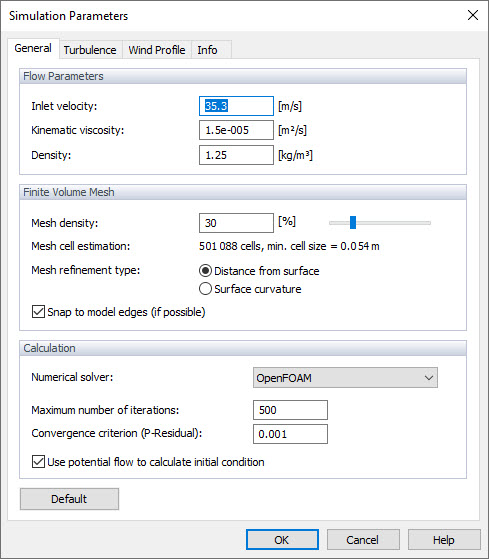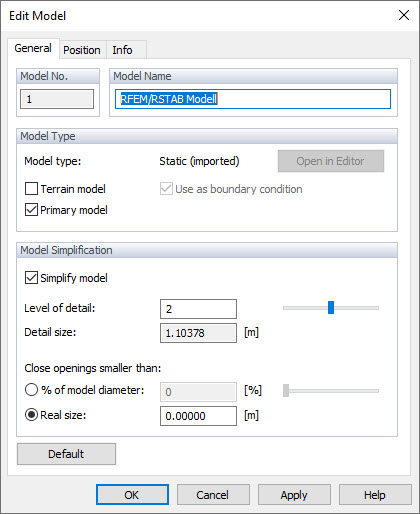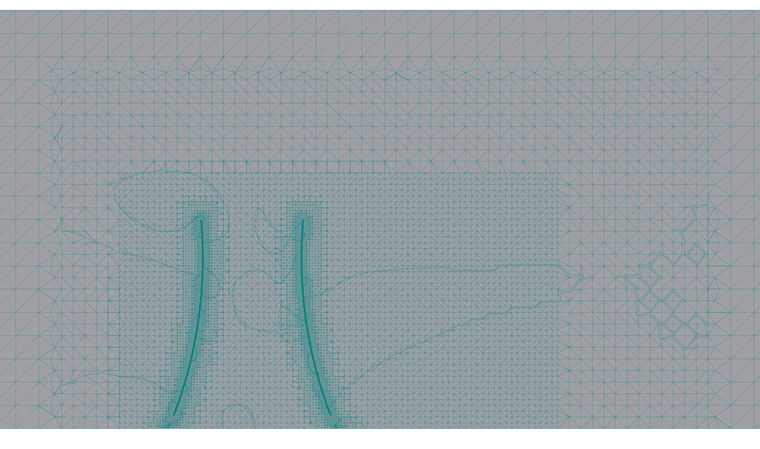The density and quality of the finite solid mesh have a significant impact on the accuracy of the results. The denser the mesh, the more accurate the results. At the same time, however, a denser mesh increases the computing time and the demands on the computer's memory.
RWIND Simulation mesh can be divided into 3 categories:
| Category | Mesh Density | Mesh Cells | Calculation Time | High-Performance Computer |
|---|---|---|---|---|
| A | low | ≤ 1 million | several minutes | ≤ 4 GB RAM |
| B | medium | 1 - 10 million | several hours | ≤ 16 GB RAM |
| C | high | 10 - 50 million | several tens of hours | ≤ 64 GB RAM |
In RWIND Simulation, the mesh density is organized globally in the "Simulation Parameters" dialog box. The mesh density can be defined in the range between 10% and 100%.
However, to increase the computational efficiency in the wind tunnel area, the program does not generate a mesh with a constant mesh density in the wind tunnel area, but automatically generates a finer mesh in the near vicinity of the models around which the wind flows than in the rest of the area.
The size of the mesh refinement of each model is controlled by 5 levels of detail in the "Edit Model" dialog box. The refinement level can be defined here with steps 0‑4.
By default, the program sets the global mesh density of 20% with Level 2 of the mesh refinement for the model. This setting usually results in a network distribution of Category A with 300 to 700,000 cells. With this large-meshed configuration of Category A, the program gives a basic display of the flow field and the pressure distribution on the wind-swept model within a very short time.
After checking all input data and compression reactions on the model, it is possible to quickly switch to the mesh of Category B in the mentioned dialog boxes by increasing the mesh density and the mesh concentration level to determine a qualitatively superior result.
Using the finer mesh refinement options and levels, it is also possible to achieve mesh of Category C.
During the development of the RWIND Simulation program, we successfully tested the mesh configurations of this kind (≥ 50 million) on an appropriate computer. However, we do not recommend this configuration at this time, as the increased accuracy of results gained in this way is not balanced with the computer requirements necessary for it.



